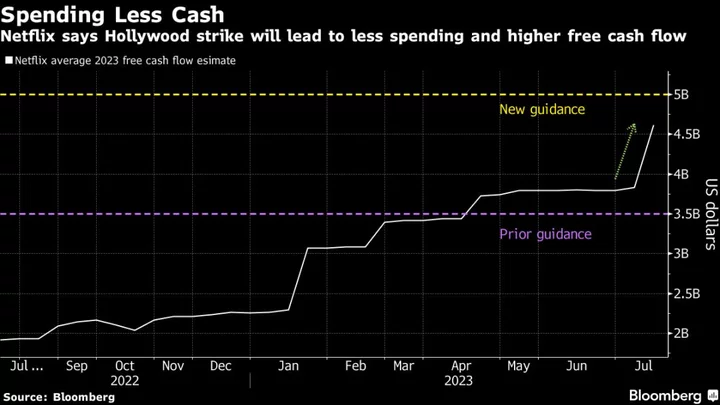There are plenty of things to be scared of (rationally or otherwise) these days. And for some, fear crosses the line into phobia—what the American Psychological Association defines as “a persistent and irrational fear of a specific situation, object, or activity … which is consequently either strenuously avoided or endured with marked distress.”
The DSM-V—the fifth edition of The Diagnostic and Statistical Manual of Mental Disorders, a standard resource in defining and categorizing mental health issues—doesn’t list every single type of phobia, but instead discusses what it calls “specific phobias” and mentions five categories, including “animal types” to the decidedly less specific “other types.”
When you hear that people are afraid of gravity or slime, you might be tempted to chuckle. But even the more unusual phobias on record presumably cause real harm to the people who suffer from them. Many people who have phobias know perfectly well that their fear is irrational; still, that doesn’t mean they can just flip a switch to put an end to them—so while the human brain can be fascinating, that doesn’t mean it should be a source of ridicule. With that in mind, here are some fascinating phobias you should know, adapted from an episode of The List Show on YouTube.
1. Philemaphobia
Philemaphobia is the fear of kissing.
2. Scopophobia
The fear of being stared at, whether it’s with amorous intentions or not, is scopophobia.
3. Gelotophobia
You won’t find gelotophobia, or the fear of being laughed at, in Merriam-Webster or the Oxford English Dictionary. But it certainly seems to be a recognizable fear: As one person with the phobia told the BBC, “I hear people laughing and ... I tense up and get ready for a fight, I can feel the adrenaline. I hardly ever talk or do anything that could cause me to be laughed at. I remain stone-faced most of the day.”
And Joe Schwarcz, the director of McGill University’s Office for Science and Society, wrote about a survey of more than 23,000 people in 73 countries, which revealed that “the condition affects anywhere from 2 to 30 percent of the population.”
4. and 5. Arachnophobia and Entomophobia
Arachnophobia, or the fear of spiders, falls into the DSM-V’s animal types category of phobias, as does the fear of insects, known as entomophobia.
6. Cynophobia
The fear of dogs is often called cynophobia.
7. and 8. Equinophobia and Ailurophobia
The DSM-V doesn’t specifically mention equinophobia—the fear of horses—or ailurophobia, the fear of cats, though they would also fall under the “animal types” category.
9. Doraphobia
On a related note, we have doraphobia, what Merriam-Webster describes as “a dread of touching the skin or fur of an animal.”
10. and 11. Aquaphobia and Hydrophobia
The second type of fear the DSM-V lists is “natural environment type.” That’s basically what it sounds like, and would include something like the fear of water—aquaphobia. Hydrophobia sounds like the same thing, and it sort of is, though the word is generally used today in regards to a symptom of the rabies virus.
12. Thalassophobia
If you’re afraid of very deep water, in particular, you have thalassophobia, which can also be defined as the fear of the ocean.
13. Astraphobia
And if you or your four-legged friend hates thunderstorms, one of you may suffer from astraphobia, which is associated with the fear of thunder and lightning.
14. Zuigerphobia
Your pup might also have a case of zuigerphobia—the fear of vacuum cleaners.
15. Ergophobia
Ergophobia is the fear of work (or maybe just an aversion to someone telling you you’ve got a case of the Mondays).
16. and 17. Hemophobia and Trypanophobia
The DSM-V’s next category of phobia, “blood-injection-injury type,” is pretty self-explanatory. The fear of blood is hemophobia. The fear of needles or injections is trypanophobia. A survey conducted in the UK indicated that people with COVID-19 vaccine hesitancy were roughly twice as likely to suffer from a fear of needles as non-hesitant individuals.
18., 19., and 20. Aerophobia, Elevatophobia, and Claustrophobia
The “situational type” of phobia includes fears that can pop up in specific parts of life, like flying in an airplane (aerophobia) or elevators (which the DSM-V does allude to, though the only word we could find to describe that condition is elevatophobia, which seems pretty unofficial). Claustrophobia, which may include the fear of elevators as a subset, would be a situational type of phobia.
21. Agoraphobia
It’s easy to think of agoraphobia as claustrophobia’s opposite—basically the fear of leaving one’s house—but that might not be quite right. The UK’s National Health Service website defines it as “a fear of being in situations where escape might be difficult or that help wouldn’t be available if things go wrong.” That can include open spaces, public transportation, and even, according to the Mayo Clinic’s website, enclosed spaces.
22. Pseudodysphagia
The DSM-V’s last category of phobias is the rather broad “other type.” Under that umbrella, it mentions the fear of choking, which is apparently a rare phobia. It’s been called pseudodysphagia.
23. Emetophobia
Emetophobia is the fear of vomiting.
24. and 25. Masklophobia and Maskaphobia
The DSM-V also mentions the fear of costumed characters in its “other” section. One word for that—masklophobia—does not appear in most standard reference texts, but it does seem to describe a very real fear, often experienced by children. An article on LiveScience.com claims that about 1 percent of children suffer from a fear of costumed characters. The New York Times published a piece in April 2020 about maskaphobia—often used as a synonym—specifically in the context of the less fanciful masks worn during the COVID-19 pandemic.
26. Globophobia
Another fear that’s fairly common among kids is globophobia—the fear of balloons or, more specifically, the fear of those balloons popping.
27. Blennophobia
Blennophobia also doesn’t appear in most dictionaries, but a number of less authoritative sources have described it as “the irrational fear of slime.” Apparently anything from mucus to fish can set off a person’s blennophobia.
28. Anemophobia
Some fears are truly difficult to avoid. Anemophobia is the fear of air; it can manifest itself as a fear of the wind or drafts.
29. Barophobia
Barophobia is the fear of gravity; sufferers believe gravity will either cause them to fall or cause something will fall on them.
30. Gerascophobia
Peter Pan may have had a case of gerascophobia, the fear of growing up or aging. Aging may be tough, but as a wise person once said, it definitely beats the alternative.
31. Hellenologophobia
The fear of Greek terms or complex scientific terminology is hellenologophobia.
32. Logophobia
Logophobia is the fear of words.
33. Glossophobia
On a possibly related note, we have glossophobia, the fear of public speaking. That’s often referred to as the most common fear. That’s hard to say definitively, but glossophobia certainly does seem to afflict a large portion of the populace.
34. Scotophobia
The OED has two very different definitions for Scotophobia—one with a capital S and the other lowercase. Big-S Scotophobia is defined as “Intense aversion or hostility toward Scotland, its people, or its culture.” The other type of scotophobia is less objectionable: It’s a fear or dislike of the dark.
35. and 36. Nyctophobia and Achluophobia
Are you afraid of the dark? If so, you could say you have nyctophobia or achluophobia, two words that have been used for that fear.
37. Photophobia
On the flip side is photophobia, which the OED defines as “aversion to or avoidance of (bright) light.“ That might not be a fear as we typically think of it—it’s associated with neurological diseases and eye issues that can make light painful or uncomfortable.
38. Ablutophobia
Ablutophobia is the fear of bathing or washing.
39. Nosophobia
Nosophobia is the fear of disease.
40. Trypophobia
Trypophobia refers to a fear of things that look like this, featuring holes in some kind of repeating pattern. There doesn’t seem to be a single conclusion in the scientific community as to why people have such a strong aversion to these types of images. Two researchers at the Centre for Brain Science at the University of Essex speculated that it could be related to a similarity between the hole-filled images and the appearance of certain dangerous animals. The thinking goes that people are basically transposing a rational fear onto an irrational situation.
41. Acrophobia
The fear of heights. According to the Cleveland Clinic, as many of 5 percent of people may have a fear of heights, making it one of the most common phobias.
This article was originally published on www.mentalfloss.com as 41 Fascinating Phobias, Explained.









